Abstract
The present study evaluated procedures to teach single and multiple intraverbal responses, and assessed whether intraverbals and tacts are functionally independent. A delayed echoic prompting procedure was used to assess transfer of stimulus control. Probes were interspersed among intraverbal training trials to measure the emergence of intraverbals that were not directly trained. Following intraverbal training, visual stimuli were presented to determine whether response topographies transferred to tact conditions. The results suggest that special training is necessary for the acquisition of intraverbal responding in retarded individuals, and provide some support for the functional independence of intraverbals and tacts at the time of acquisition.
Full text
PDF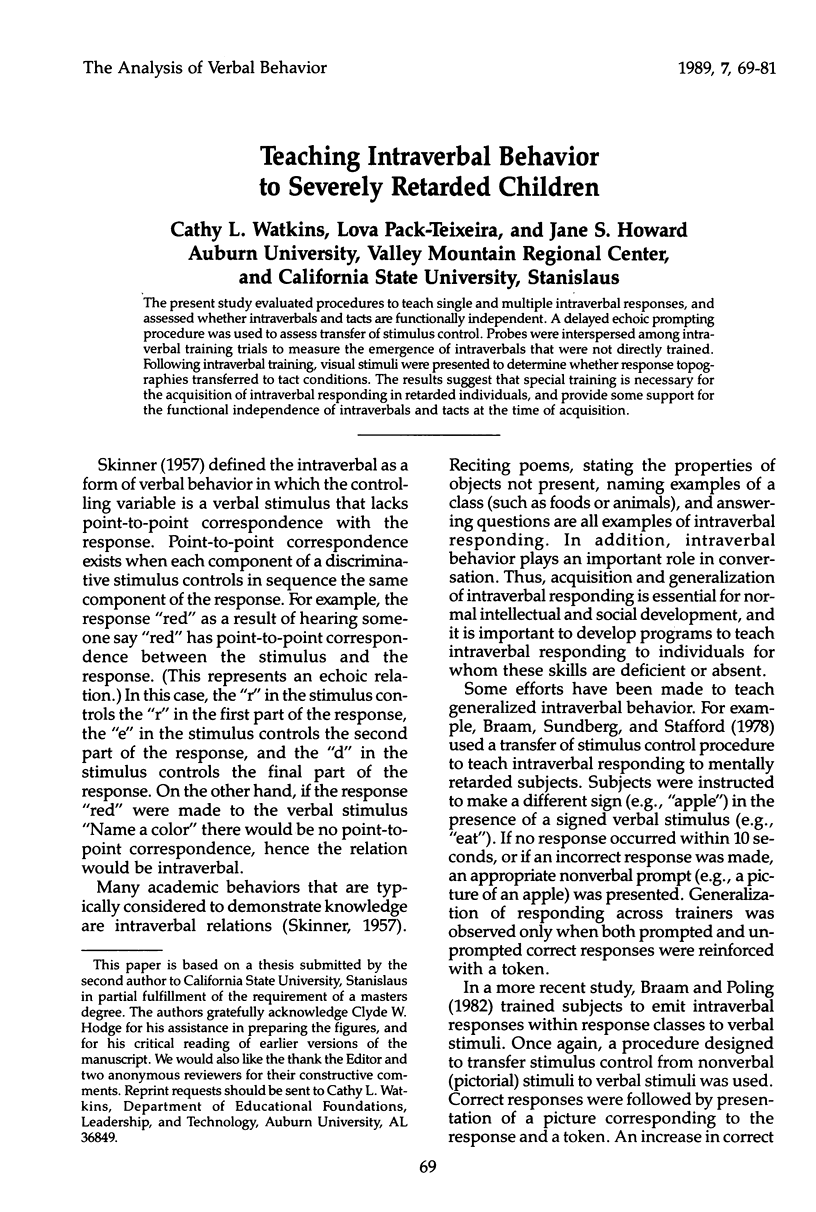
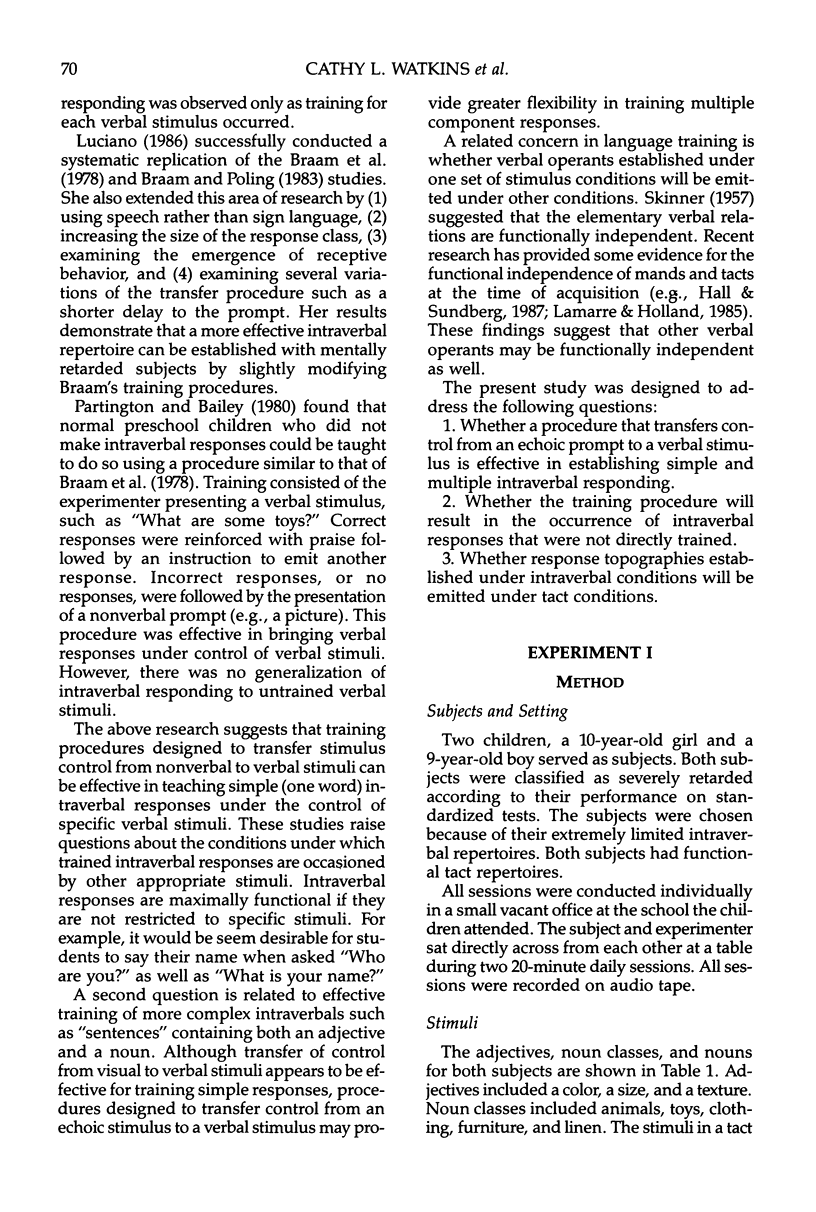
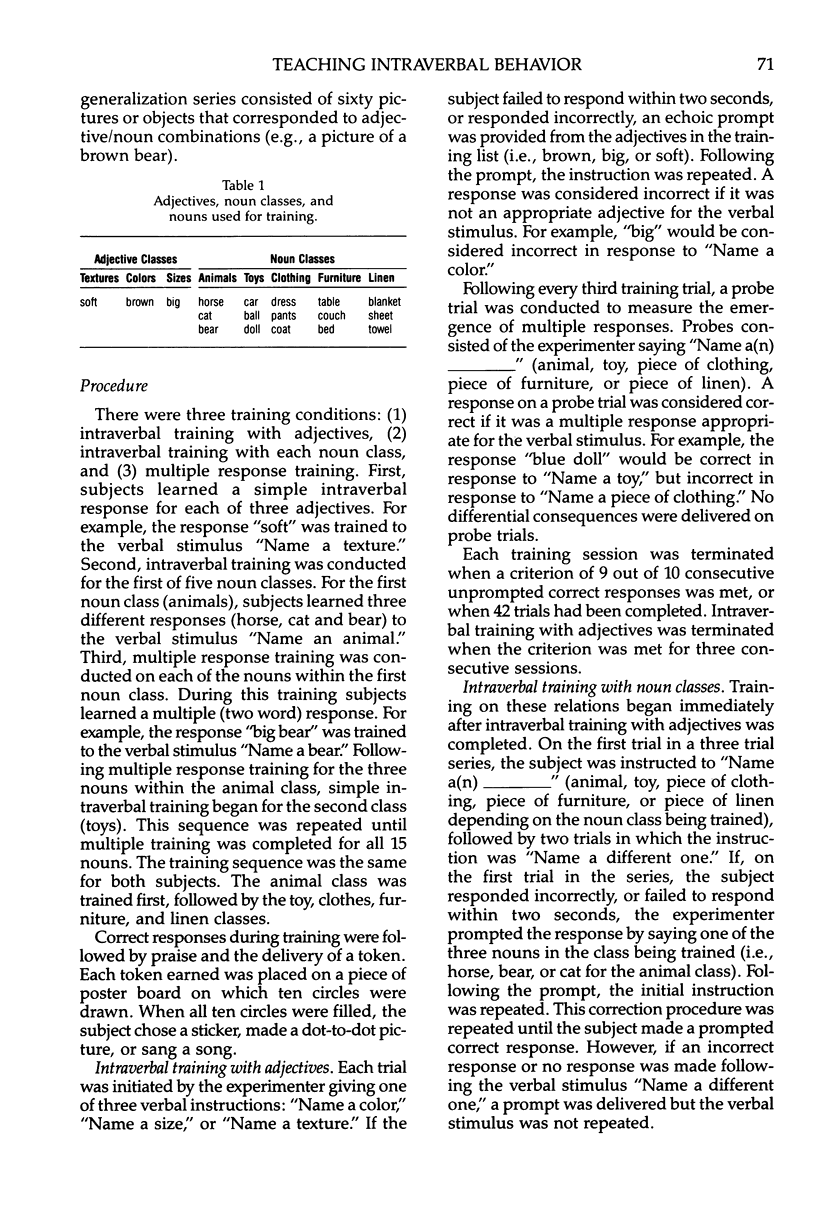
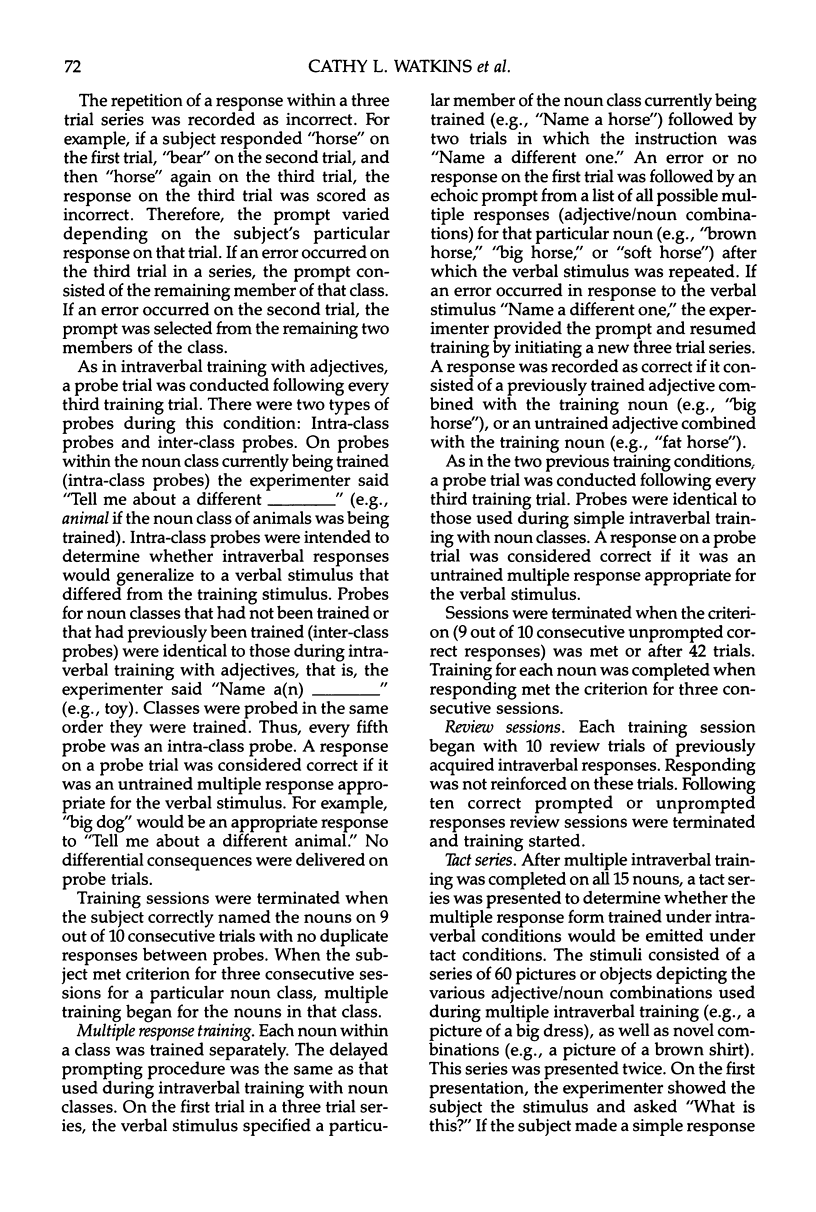
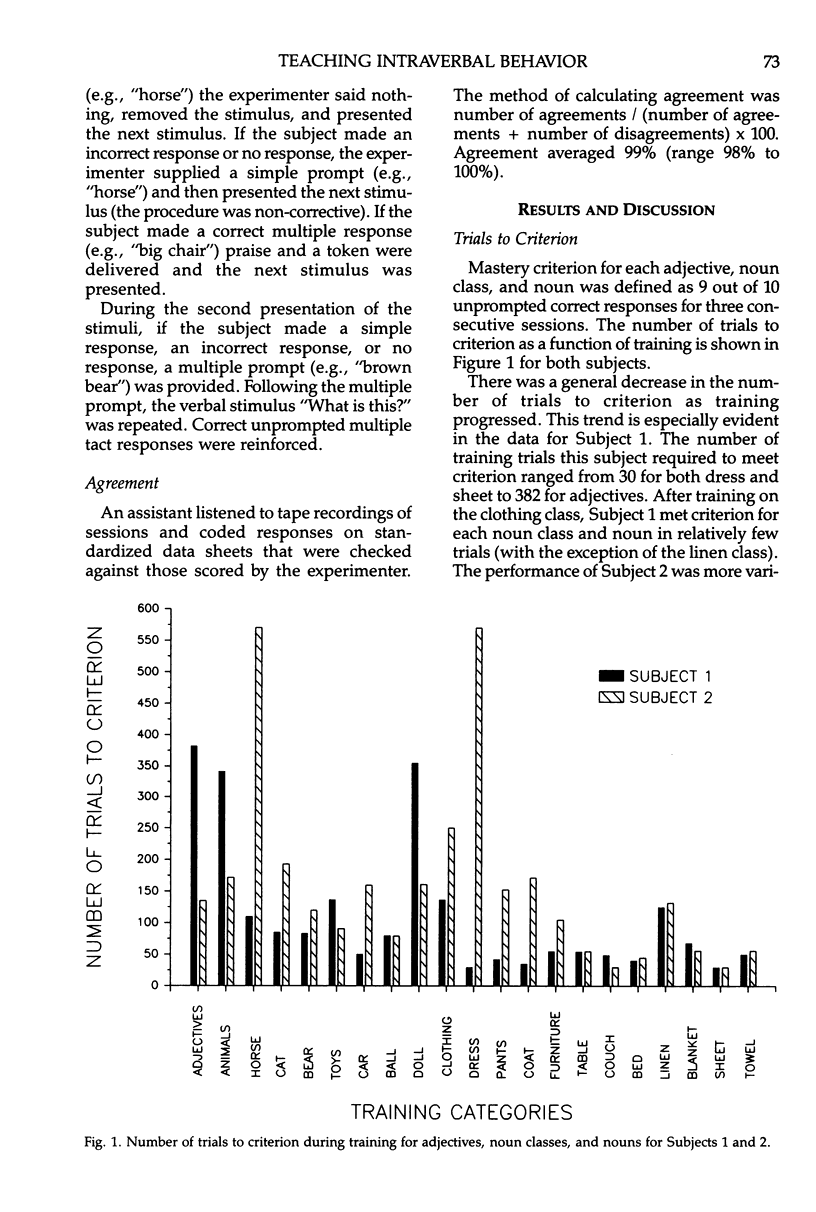
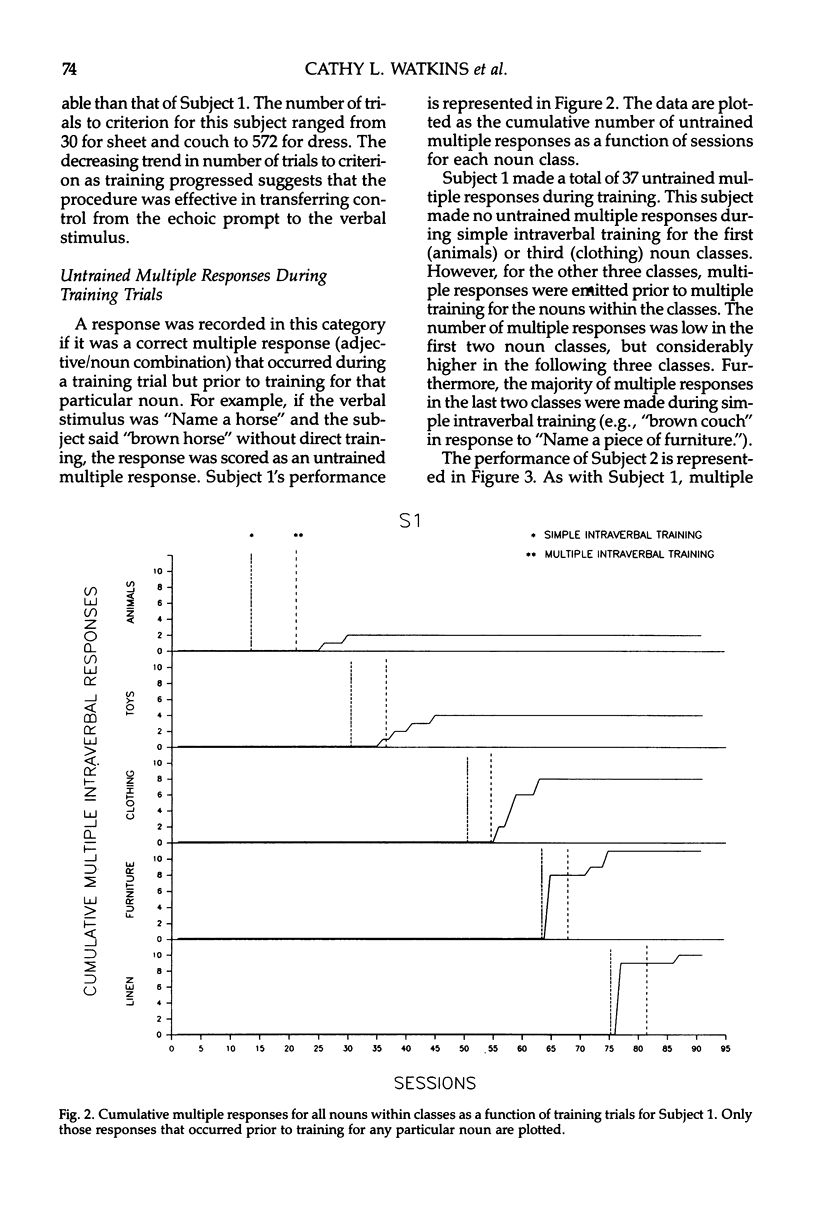
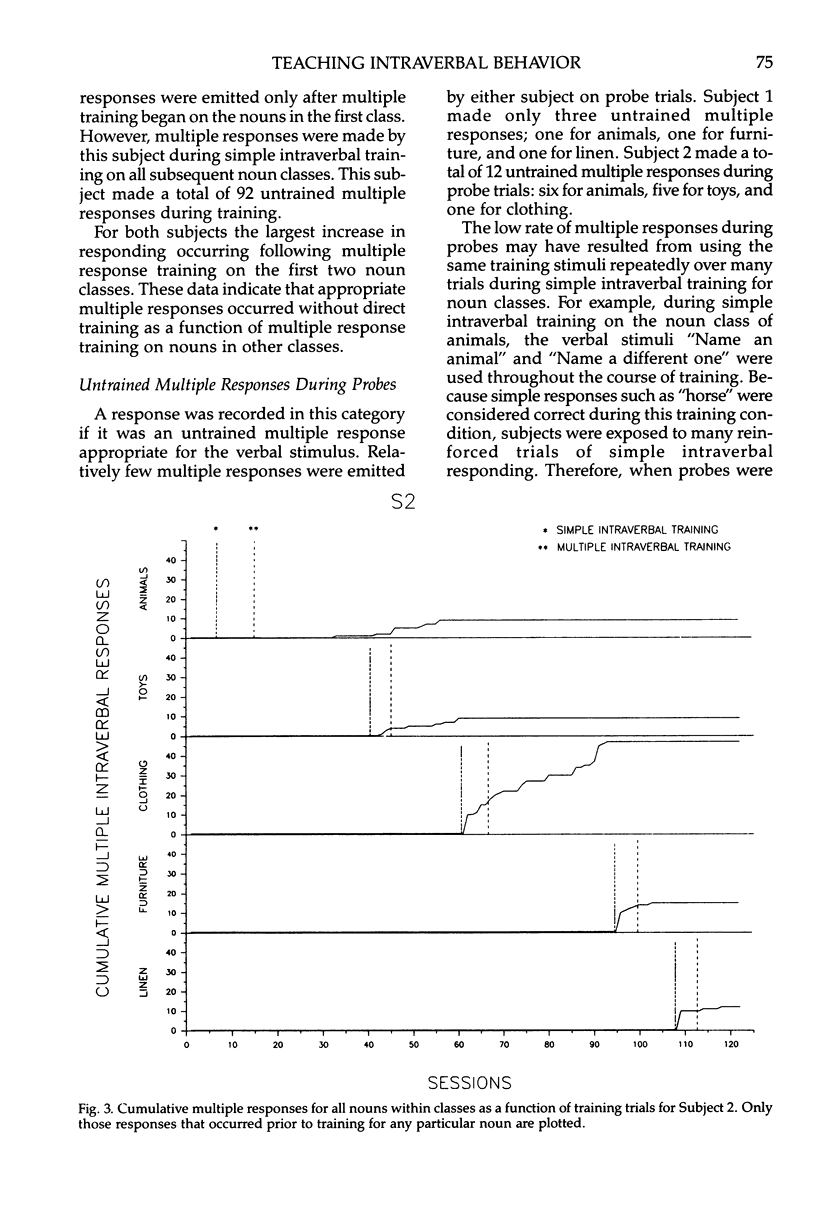
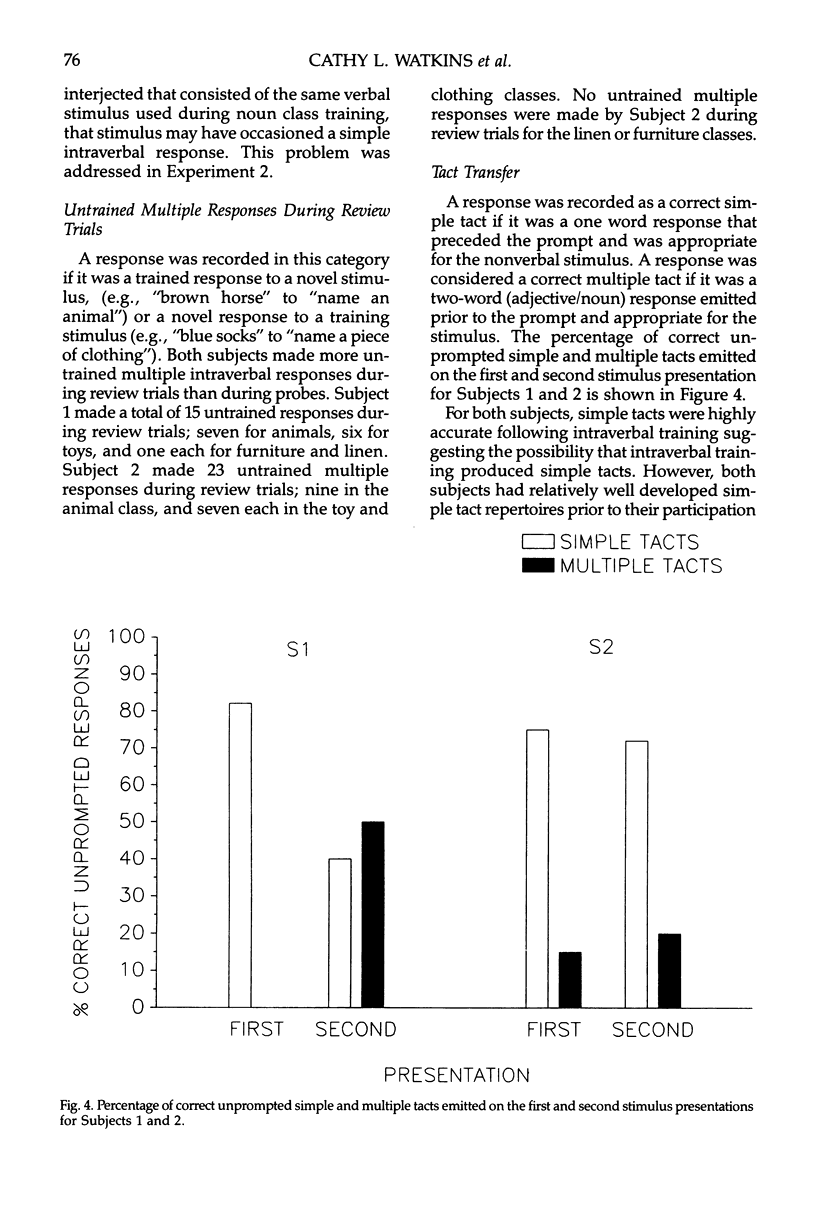
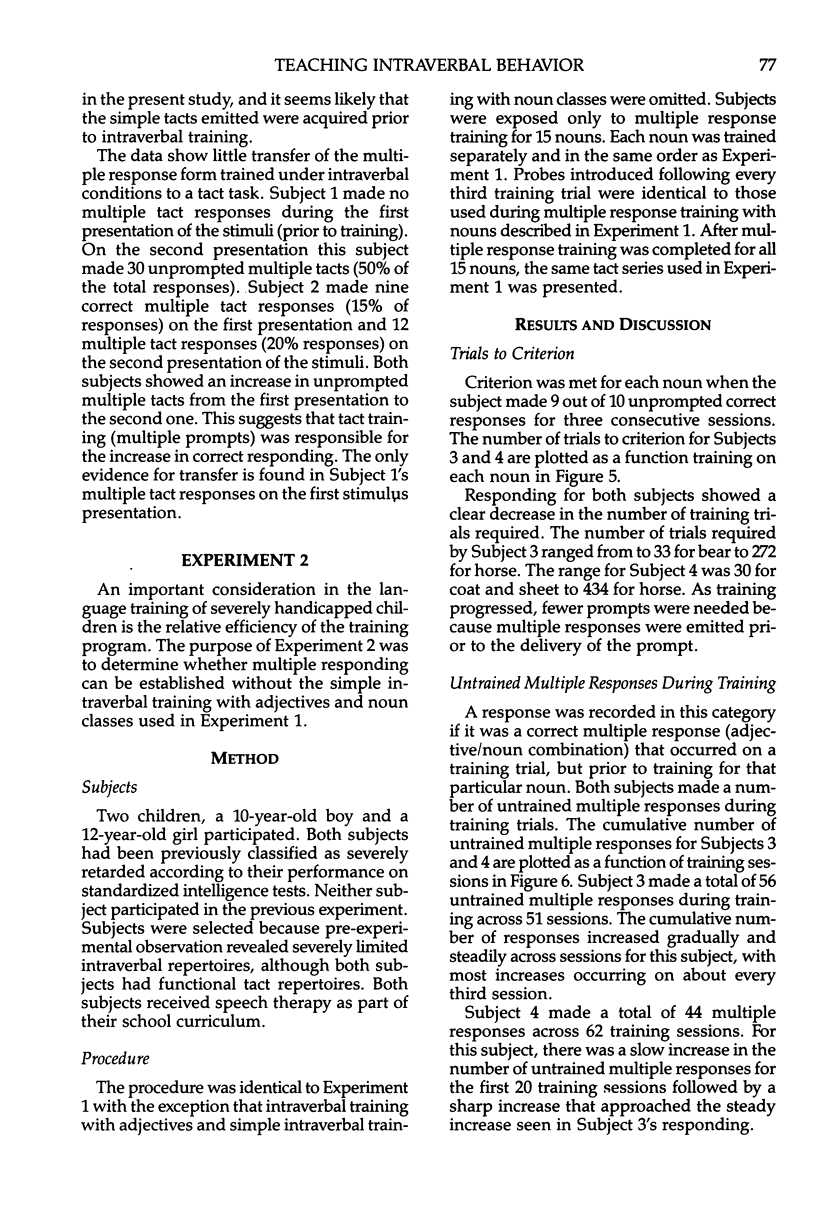
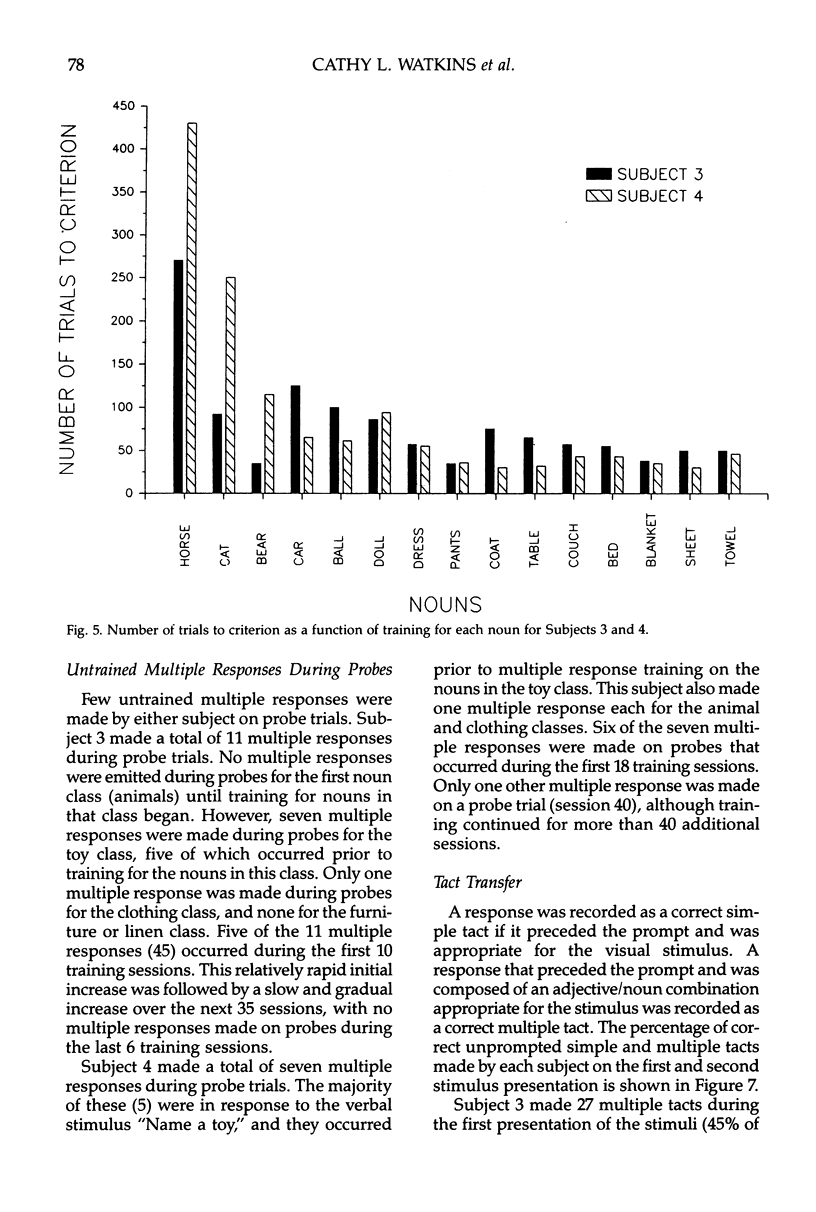
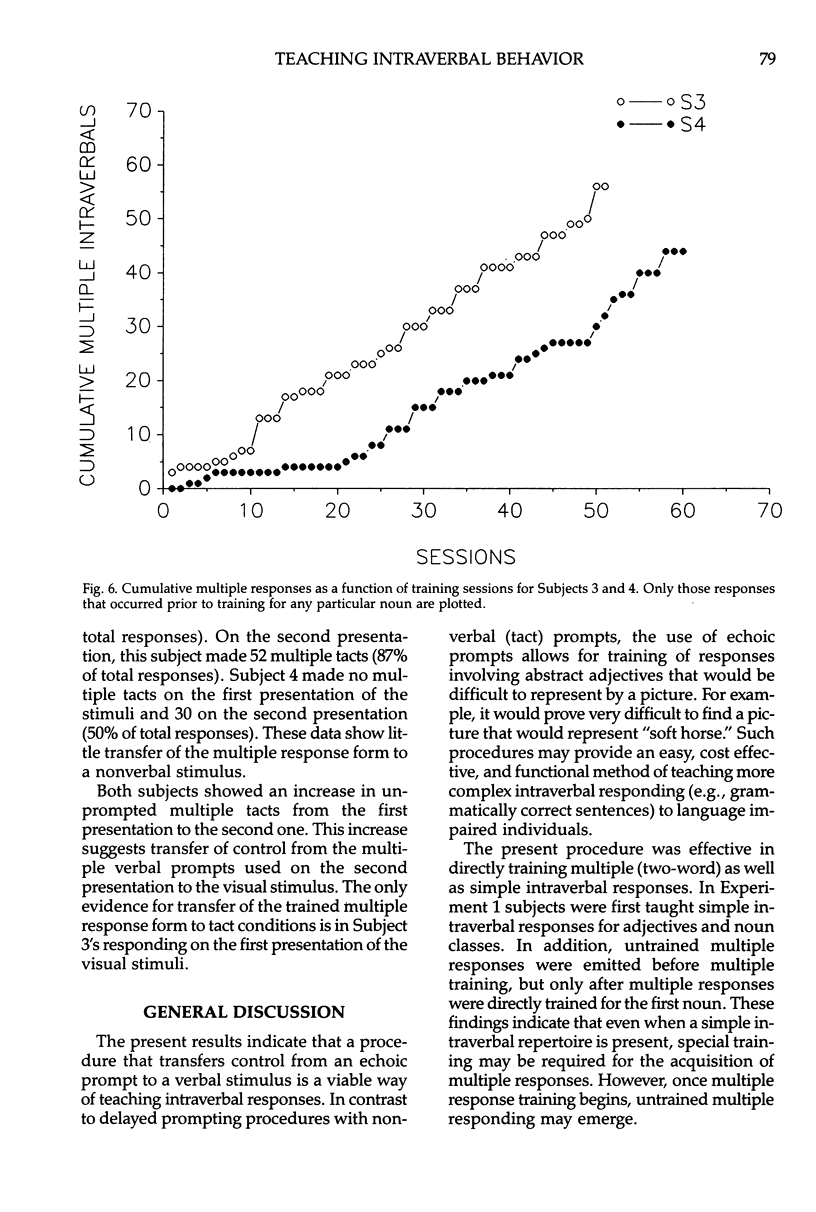
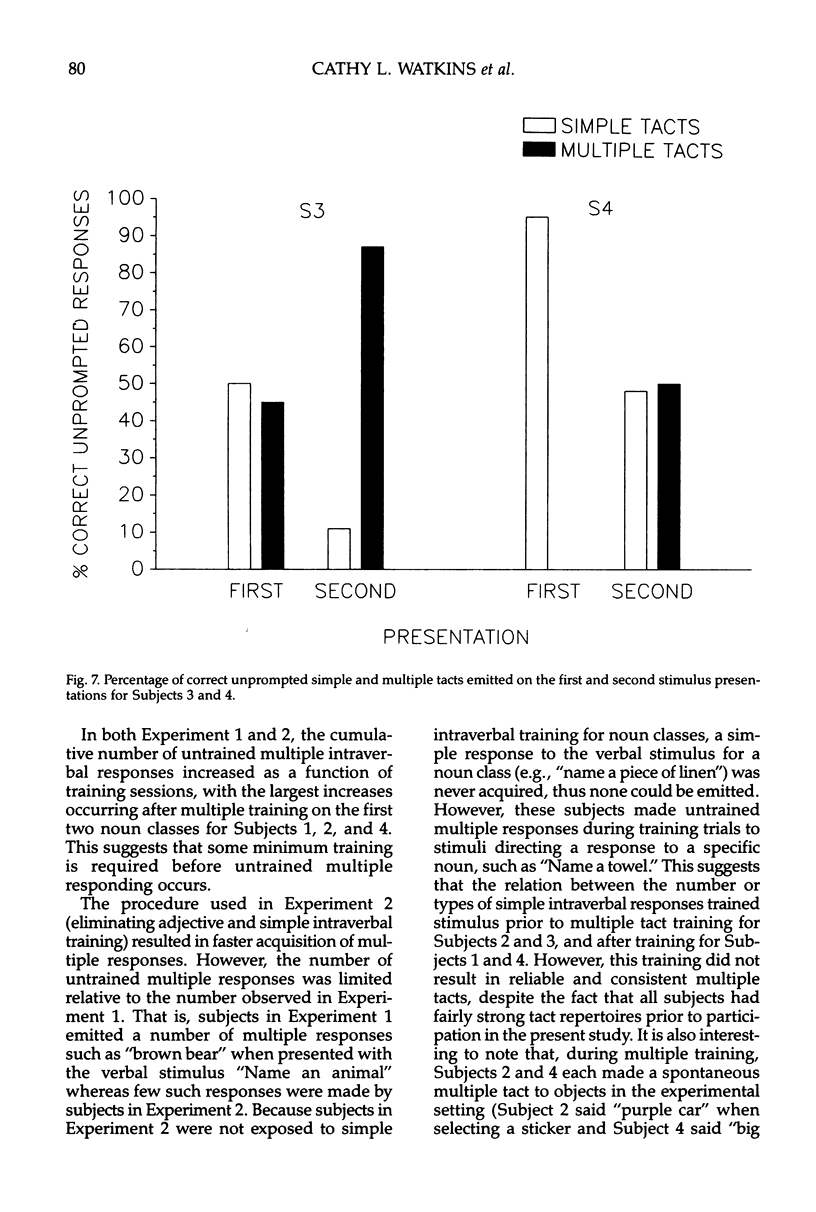
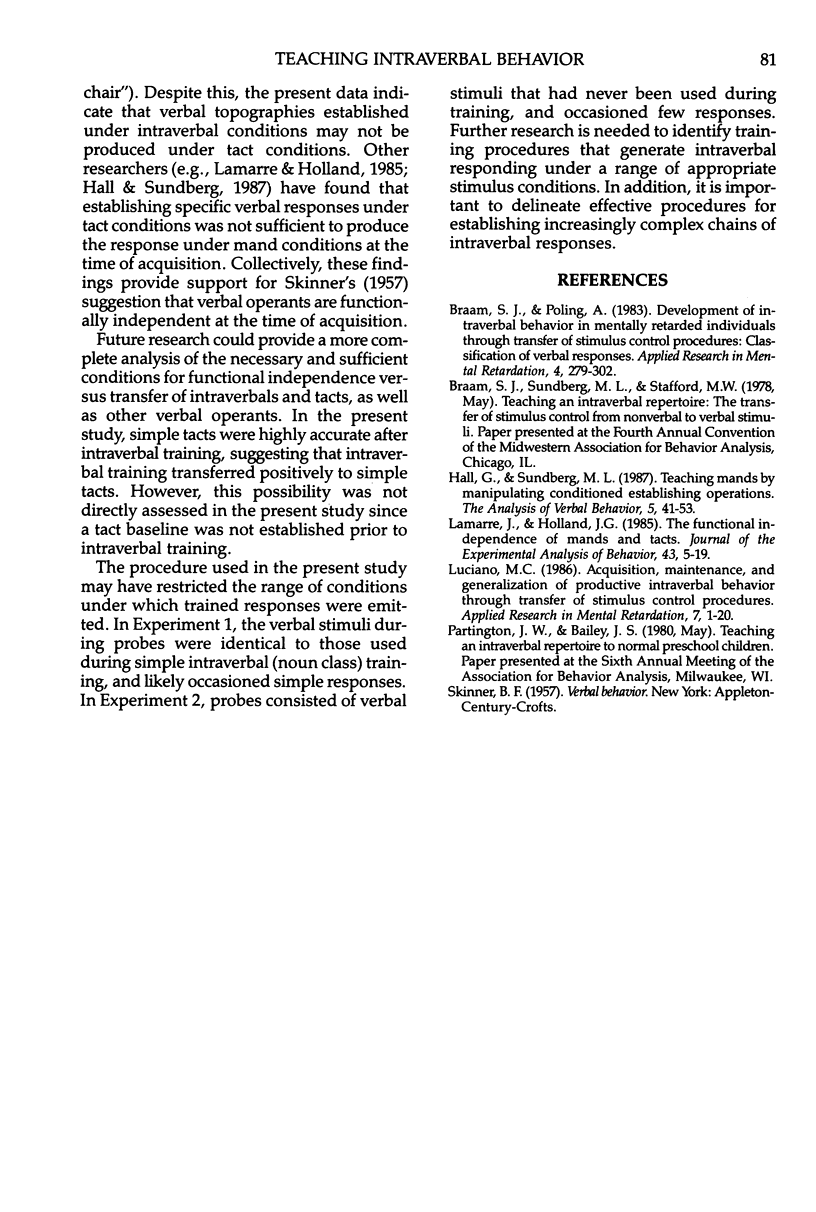
Selected References
These references are in PubMed. This may not be the complete list of references from this article.
- Braam S. J., Poling A. Development of intraverbal behavior in mentally retarded individuals through transfer of stimulus control procedures: classification of verbal responses. Appl Res Ment Retard. 1983;4(4):279–302. doi: 10.1016/0270-3092(83)90030-9. [DOI] [PubMed] [Google Scholar]
- Lamarre J., Holland J. G. The functional independence of mands and tacts. J Exp Anal Behav. 1985 Jan;43(1):5–19. doi: 10.1901/jeab.1985.43-5. [DOI] [PMC free article] [PubMed] [Google Scholar]
- Luciano M. C. Acquisition, maintenance, and generalization of productive intraverbal behavior through transfer of stimulus control procedures. Appl Res Ment Retard. 1986;7(1):1–20. doi: 10.1016/0270-3092(86)90014-7. [DOI] [PubMed] [Google Scholar]


